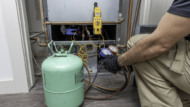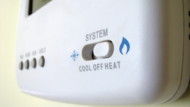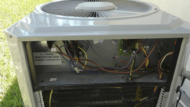Fortunately for Los Angeles residents, our state is renowned for its sunny weather and perfect temperatures. Unfortunately for us locals, finding the balance with energy efficiency is tricky.
According to the US Department of Energy, over half of a home’s energy bills will be spent on heating and cooling. Because of the City of Angel’s environmental consciousness and initiatives, there is plenty of potential for cost savings, especially with the rise in energy costs.
From enhancements to the home to upgrading appliances and overall behavioral changes to reduce energy consumption, these are the Top Tips for Reducing Energy Bills in Los Angeles Homes and Businesses:
Understanding Los Angeles’s Energy Landscape
Historically, Los Angeles derived much of its electricity from various hydroelectric plants strategically positioned along the Los Angeles Aqueduct. Today, the city’s energy needs are met through a diverse array of power sources stretching across the western United States, including natural gas, nuclear energy, and renewables like water, wind, and solar power.
Significant changes are afoot in the city’s energy strategy. The city council has set ambitious goals with a recent resolution for a fully decarbonized municipal energy mix by 2035. By 2045, state legislation mandates that California’s entire electrical grid be carbon-free, aligning with broader environmental targets.
As it stands, fossil fuels including gas and coal still comprise 40% of Los Angeles’s current energy portfolio. Meanwhile, non-renewable sources like nuclear and hydroelectric power contribute to 60% of the city’s energy consumption.
Despite these shifts towards cleaner energy, Los Angeles residents currently face electricity costs that are 8% higher than the national average. The residential sector alone accounts for roughly 22% of total electricity consumption in the state, highlighting the ongoing challenge of balancing energy demands with sustainability efforts.
Enhancing Home and Business
In Los Angeles, leveraging natural resources for energy efficiency is increasingly vital. With the city basking in approximately 3,200 hours of sunshine annually, solar power is a major opportunity for homeowners. Investment in solar panels not only taps into this abundant solar energy but also boosts property values. Indeed, homes equipped with solar installations typically command prices that are about 4.1% higher than similar properties without them in the Los Angeles market.
Another effective way to achieve energy savings is through enhanced insulation. Proper insulation in homes and businesses can lead to considerable cost reductions. According to the Environmental Protection Agency, improving insulation in areas such as basements, crawl spaces, and attics could help homeowners save up to 15% on their heating and cooling expenses.
The method of inspecting insulation through electrical outlets is simple yet revealing. Homeowners can assess their insulation levels themselves by turning off power to an outlet, removing the cover, and using a flashlight to check for gaps around the outlet box.
The easiest way to examine insulation is through the electrical outlet. Simply turn off the power to the outlet, remove the cover, and shine a flashlight through the crack around the outlet box.
Efficient Appliance Use and Upgrades

The importance of upgrading these appliances cannot be overstated. Older models, including refrigerators, washing machines, air conditioners, and vacuum cleaners, are considerably less efficient than their modern counterparts. Replacing these outdated units can positively impact your utility bill, reducing both energy consumption and costs.
When selecting new appliances, it is essential to look for Energy Star-rated products. These appliances meet rigorous energy efficiency specifications set by the EPA. Notably, appliances carrying the Energy Star label consume about 25% less energy and 75% less water than standard models, offering substantial economic and environmental benefits.
To select the proper, efficient appliance or upgrade, consumers should look for the Energy Star-rated label indicating the product meets energy-efficient specifications set by the EPA. Energy Star-labelled appliances use 25% less energy and roughly 75% less water.
Smart Thermostats and Energy Management Systems
Smart AC units are pivotal in advancing home efficiency, possessing a higher seasonal energy efficiency ratio. These units not only adjust temperatures automatically but also prompt filter replacements every three months. Furthermore, they can regulate lighting by turning off lights in unoccupied rooms and adjusting brightness based on available natural light.
For commercial settings, implementing an energy management system (EnMS) can dramatically reduce excessive energy usage. An EnMS monitors energy consumption and identifies opportunities for improvement, helping businesses set realistic and achievable energy-saving goals.
These systems represent a strategic low-cost, low-risk method to cut down on greenhouse gas emissions significantly. By optimizing energy usage with smart technology, both homeowners and businesses can achieve substantial energy savings and contribute to environmental sustainability.
Landscape and Exterior Design for Energy Efficiency
Effective landscaping and thoughtful exterior designs can significantly enhance the energy efficiency of homes and businesses. Strategic placement of shade trees and the use of reflective roofing materials can modify the microclimate around buildings, minimizing heat gain during summer and reducing heat loss in winter.
Structures can benefit from additional shading provided by grouped vegetation, evergreen shrubs, or small trees positioned to block intense sunlight. These natural barriers not only offer shade but also contribute to the aesthetic appeal of the property.
Collectively, these modifications can lead to a substantial reduction in energy costs—potentially decreasing winter heating bills by up to 25% and cutting summer cooling expenses by more than 50%. Such landscape-oriented approaches are essential for achieving long-term energy savings and sustainability.
Behavioral Changes to Reduce Energy Consumption
Here are some simple yet effective habits homeowners and businesses can adopt:
- Moderate use of heating and air conditioning
- Turn off lights when not using and optimize daylight
- Schedule regular maintenance (e.g., HVAC servicing)
- Automation in electric outlets
- Diversify energy sources
Government Incentives and Rebates
The Los Angeles Department of Public Works (LADWP) offers several rebates and incentives for installing various energy efficiency measures. These can include thermal energy storage, lighting, and HVAC refrigeration. A few select LADWP programs are as follows:
- Power Savers: An energy management program for residential that allows remote adjustment of thermostats.
- Zero By Design: encourages developers to build sustainably by providing financial incentives for new construction projects.
- Comprehensive Affordable Multifamily Retrofits Program: Assists the city’s low-income, multifamily property owners.
- Custom Performance Program: This program pays businesses incentives for energy savings achieved through the installation of various energy efficiency measures.
For a complete list of programs and incentives, click here.
Embracing Sustainable Living in Los Angeles
As Los Angeles continues its journey towards a greener future, the role of individual homeowners and businesses in energy conservation becomes increasingly vital. By incorporating the strategies outlined—from upgrading to solar power and enhancing insulation to optimizing appliance use and leveraging smart energy systems—Angelenos can play a crucial part in shaping a sustainable city. Each action, whether small or large, contributes meaningfully to reducing the overall energy footprint and curbing the rising costs associated with energy consumption.
By taking advantage of the various incentives and rebates offered by the Los Angeles Department of Public Works and other entities, residents can offset some of the costs associated with these upgrades, making energy efficiency more accessible and affordable. With the city’s ambitious goals for a decarbonized energy mix and a fully renewable grid, there’s never been a better time to invest in energy efficiency measures that not only save money but also ensure a healthier, more sustainable environment for all.







